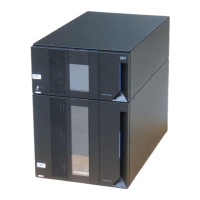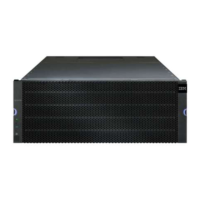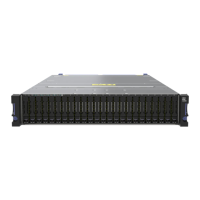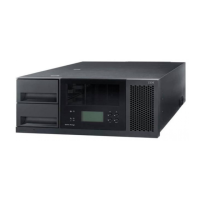128 IBM Midrange System Storage Hardware Guide
Cost: Consider an existing Fibre Channel environment where you want to implement SATA
technology. This consideration is further enhanced with Fibre Channel and SATA drive
intermixing within the same enclosures. The cost considerations of intermixing versus
implementing a separate SATA storage subsystem are:
– Implementation costs of a new SATA storage subsystem versus intermixing with the
existing Fibre Channel enclosures.
– SAN infrastructure costs for more ports or hardware.
– Administration costs (effort) depend on the number of controllers managed. Intermixing
eliminates controller pairs by leveraging existing controllers.
After these factors have been considered and the criteria for the environment has been
identified, the choice to intermix or not can be determined.
4.3 Planning your host attachment method
In this section, we review the different attachments methods available for the IBM Midrange
System Storage DS5000 storage subsystem so you can evaluate the requirements needed in
each case. The options to attach your hosts to the DS5000 storage subsystems are:
Fibre Channel
– Direct Attach
– Storage Area Network attached
iSCSI attach
4.3.1 Fibre Channel: SAN or Direct Attach
When planning the setup of a Storage Area Network (SAN), you want the solution to answer
your current requirements and fulfill your future needs.
First, the SAN should be able to accommodate a growing demand in storage (it is estimated
that storage needs double every two years). Second, the SAN must be able to keep up with
the constant evolution of technology and resulting hardware upgrades and improvements. It is
estimated that a storage installation needs to be upgraded every 2 to 3 years.
Ensuring compatibility among different pieces of equipment is crucial when planning the
installation. The important question is what device works with what, and also who has tested
and certified that equipment.
When designing a SAN storage solution, it is a best practice to complete the following steps:
1. Produce a statement outlining the solution requirements that can be used to determine the
type of configuration you need. It should also be used to cross-check that the solution
design delivers the basic requirements. The statement should have easily defined bullet
points covering the requirements, for example:
– New installation or upgrade of an existing infrastructure.
– Host Bus Adapter (HBA) selection (1 Gb, 2 Gb, 4 Gb, or 8 Gb speed).
– HBA driver type selection: SCSIPort or StorPort.
– Multipath Driver selection (RDAC, MPIO, or SDDPCM).
– Types of applications accessing the SAN. (Are the applications I/O intensive or high
throughput?)
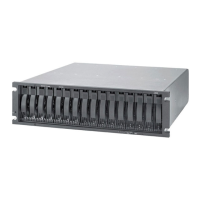
